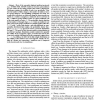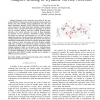106 search results - page 18 / 22 » A Path Density Protocol for MANETs |
IDC
2009
Springer
13 years 5 months ago
2009
Springer
A major challenge faced in mobile ad hoc networks (MANETs) is locating devices for communication, especially in the case of high node mobility and sparse node density. Present solu...
INFOCOM
2002
IEEE
14 years 18 days ago
2002
IEEE
— Most of the currently deployed multicast protocols (e.g. DVMRP, PIM, MOSPF) build one shortest path multicast tree per sender, the tree being rooted at the sender’s subnetwor...
MOBIHOC
2005
ACM
14 years 7 months ago
2005
ACM
: In this paper, we analyze the node scheduling approach of topology control in the context of reliable packet delivery. In node scheduling, only a minimum set of nodes needed for ...
WCNC
2008
IEEE
14 years 2 months ago
2008
IEEE
Abstract—Dynamic ad hoc networks are mobile ad hoc networks (MANETs) where network characteristics, such as network density and node mobility, change significantly over time and...
CORR
2010
Springer
13 years 7 months ago
2010
Springer
Opportunistic routing is a multi-hop routing scheme which allows for selection of the best immediately available relay. In blind opportunistic routing protocols, where transmitters...


